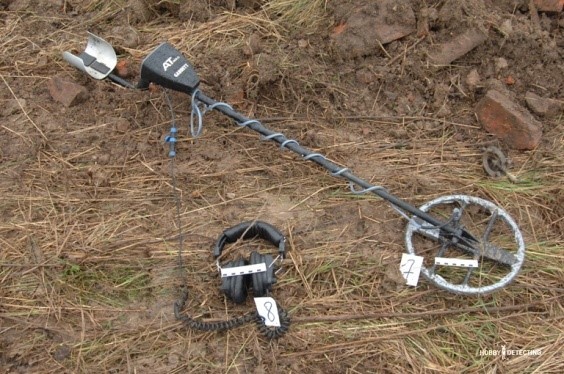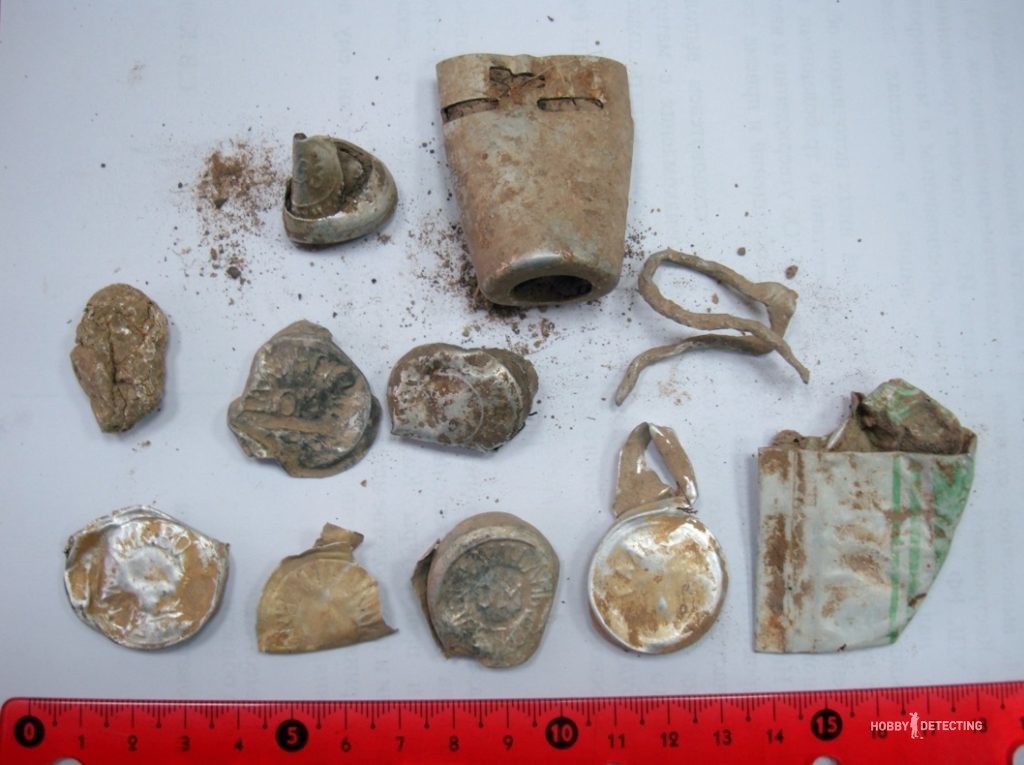Criminal article against diggers. There's nothing to be afraid of anymore
It's time for good stories.
I think that anyone and everyone who has at least once picked up a metal detector in order to look for coins and all kinds of antiquities in places where they are compactly located, has at least once heard or read somewhere that they can be sent to prison or give a hefty fine.
On the topic of criminal liability, for old-fashioned coping or instrumental search, many, many bloggers caught the hype and constantly fueled the wave. At the same time, absolutely not understanding the very essence of the criminal article. At best, they could have heard something somewhere and somehow interpreted what they heard in their own way. Whereas, on our website http://hobby-detecting.ru/ and in the blog on Zen “Search with Ivan Krause” we have repeatedly discussed these topics with a full analysis of real criminal and administrative cases.
Therefore, this article is the result of many years of painstaking study of judicial practice, the legislative framework and endless disputes in comments with lawyers, specialists and those who, like me, have been studying the topic of the legality of instrumental search for years.
Now to the point or the point. Article 243.2. Criminal Code of the Russian Federation Illegal search and (or) seizure of archaeological objects from their locations.
Like most of those lovers of instrumental search who independently tried to understand how this article can be circumvented or at least not violated when searching for coins, I have come a very long way. And now I want to tell you the final part of my research. Without going into details of the intermediate stages.
The first thing we need to know about this article? This means that a criminal offense is not the search and removal of something from its location (coins, crosses, vodka caps or the helmet of Alexander the Great) but the destruction or damage of a cultural layer.
Why is that? Because the first paragraph of the criminal article reads:
Search and (or) removal of archaeological objects from places of occurrence on the surface of the earth, in the ground or under water, carried out without permission (open sheet), resulting in damage or destruction of the cultural layer
That is, a crime is a set of certain actions that entailed the destruction of a cultural layer. The search and (or) removal of archaeological objects from their locations in themselves is not a criminal offense.
I think this is clear to you.
And now I will give two reasons, in essence, the use of this article is no longer possible at the moment. Even if a citizen is detained during excavations of a Scythian burial mound and tens of kilograms of archaeological objects made of gold are found in his possession, it is a criminal offense, Article Art. 243.2 of the Criminal Code of the Russian Federation cannot be applied to him.
Reason one. The fact is that no one knows what a cultural layer is. And, I don’t need to write in the comments here that excerpt from the law about traces of the existence of a person over 100 years old. This definition has not worked since the very first day of the adoption of this article. And, it is needed only to intimidate illiterate citizens.
The fact is that this very explanation about traces older than 100 years could only work in the legal field until 2019. Until this year, numerous legal norms, regulations and legislative acts adopted in the USSR were in force and in circulation in the Russian Federation. After 2019, as a result of a legislative reform called the “legislative guillotine,” all legal norms adopted under the USSR were immediately abolished.

How this worked in relation to diggers in the old days when they were detained at an excavation site can be read in detail in the article on our website about the Yegonts case
This was the very first case in our country under Art. 243.2 of the Criminal Code of the Russian Federation. Then, when detained at the excavation site, a group of diggers found a tin soldier and a bunch of vodka caps. And the evidence base for the crime was built on the fact that a certain researcher from the historical museum, brought to the site by the seizure group, looked at the soil, pointed his finger and said, “I see a cultural layer here.” Well, naturally, this conclusion was confirmed in the protocol and, subsequently, attached to the case as irrefutable evidence of the guilt of the detainees. As a result, Egonets received a criminal charge and two years of probation.


It is clear how it was then. So what now?
And now, only a forensic report can serve as proof of the presence of a cultural layer in the area. According to the law on forensic examination, such examinations can only be carried out by state-certified experts on the basis of a methodology approved by the relevant department. There are no experts in identifying the cultural layer in the Russian Federation. There is also no method for identifying the cultural layer. Therefore, no one knows what a cultural layer is. Why, according to the logic of things, it is impossible to destroy something that does not exist.
If one reason is not enough for you why a criminal article can no longer be applied against diggers, then let’s move on to the second topic.
Corpus delicti. There is such a concept in investigative practice. I will not go into details of the types of crime, but I will say right away that the investigator has the right to initiate a criminal case under Art. 243.2 of the Criminal Code of the Russian Federation only upon receipt of a statement from the injured party about causing material damage on a large scale. In money, this is half a million rubles and more. That is, if the investigator initiates a criminal case under Art. 243.2 of the Criminal Code of the Russian Federation, simply by finding photographs on social networks, this is a direct abuse of official authority with a consequent criminal offense against the investigator himself.
For those who want to dive deeply into this topic, I recommend reading:
OFFICE OF THE PROSECUTOR GENERAL OF THE RUSSIAN FEDERATION
LETTER
dated December 6, 2018 N 36-10-2018
On methodological recommendations “Features of qualification and investigation of crimes committed against objects of cultural heritage, identified objects of cultural heritage, natural complexes, objects taken under state protection, or cultural values.
But that's not all. As you understand, an application to initiate a criminal case must be filed by the injured party. And, here's the problem. The cultural layer has no owners, just as there is no method for identifying and determining damage. To understand what we are talking about, I will say that, according to the law, the owner of all archaeological sites on the territory of the Russian Federation is the state. That is, a plot of land may belong to a citizen or organization, and the archaeological site located on this plot is the property of the state.
So, the cultural layer does not have an owner. There is no one to identify the damage and file a complaint.
Therefore, in recent years Art. 243.2 of the Criminal Code of the Russian Federation is applied and used only in two cases. The first is when the accused, intimidated by a criminal sentence, decides to make a deal with the investigation and fully admits his guilt. The second option, which is very rare, is when the crime scene is recognized as an identified archaeological site, thereby proving that there is a cultural layer at the site. This option only works when the defendant decides to defend himself. And, this is a separate story, which I will write about in the near future.
This is what legal science is like in relation to our favorite hobby. If the article was interesting to you, and you have not yet subscribed to our Zen channel, then be sure to subscribe. Don't forget to like and leave comments. Even if you didn’t understand anything from everything you read above)))
